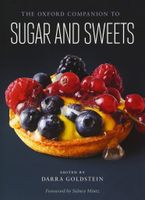Advertisement
Quince Pastes
Published 2015
Quince pastes seem to have been known in most European cultures for many centuries, and quinces were stewed in honey for long keeping by the Romans in at least the fourth century c.e., and quite probably earlier. Medieval Arab confectioners developed the technique of stewing fruit pulp with refined sugar to make long-keeping pastes, and it is likely that the recipe arrived in Spain along with sugar in the twelfth century.
Cotignac is a version of pâte de coings, thick quince paste that originates in Orleans, France. It is molded in small, plain wooden boxes, or in large patterned molds that are sold as decorative blocks. This traditional delicacy was exported from France to England in the sixteenth century, where it was recorded with variable spellings, such as Sir Hugh Plat’s “Quidini of Quinces.”


